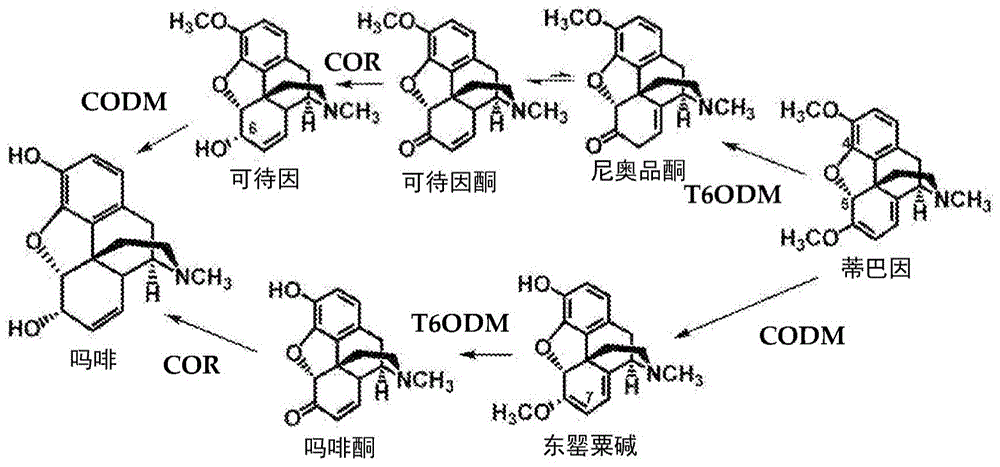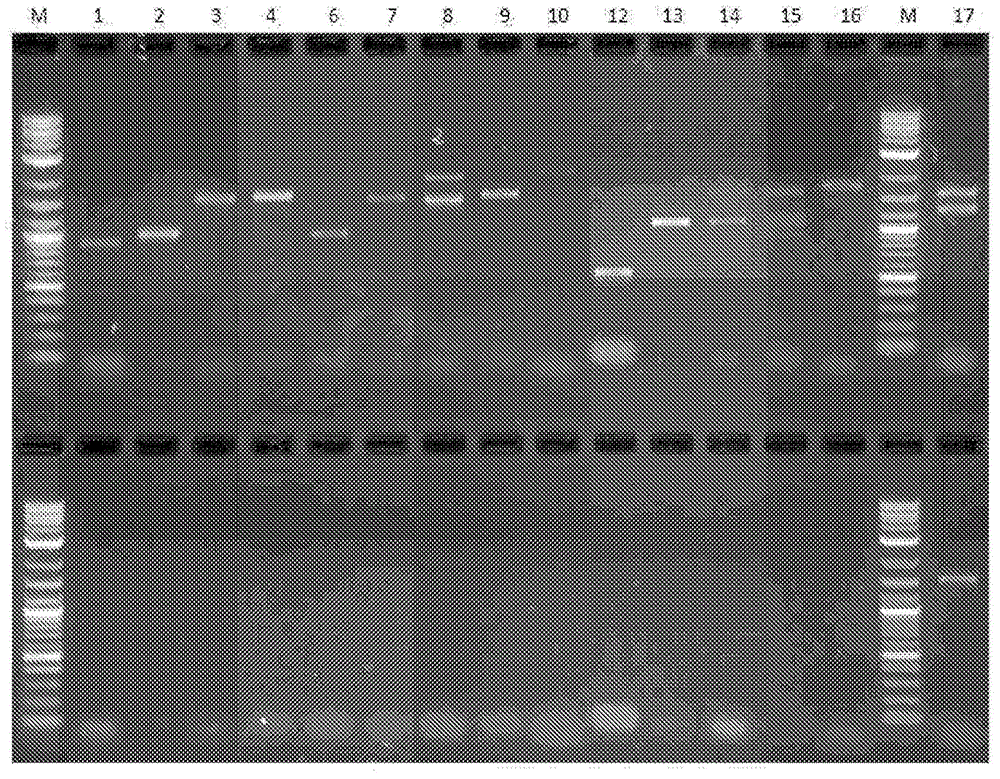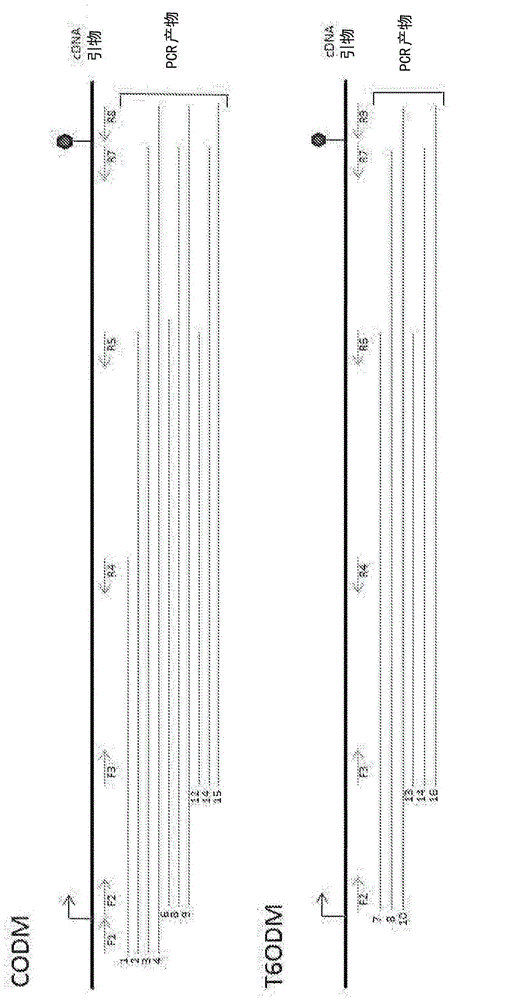Papaver bracteatum with modified alkaloid content
A kind of alkaloid and poppy technology, applied in the plant field of the red poppy species, can solve the problems of changing the red poppy, not being informed, etc.
- Summary
- Abstract
- Description
- Claims
- Application Information
AI Technical Summary
Problems solved by technology
Method used
Image
Examples
Embodiment 1
[0178] Production of codeine / oripavine and / or morphine in the big red poppy
[0179] The nucleotide sequence listed under GenBank accession number GQ500139 (which encodes T6ODM) is cloned into an appropriate expression vector, such as pBI121 (Clontech), under the control of the cauliflower mosaic virus 35S promoter (CaMV 35S), This promoter directs constitutive expression in P. papyrus. The transgene was introduced into P. papyrus by Agrobacterium-mediated transformation using the method described by Solouki et al. (2009, supra). Transformants were selected using paromomycin and regenerated as described by Solouki et al. (2009, supra). Then, the transformants were screened for alkaloid content.
[0180] In said transformants, it is proposed that the strong constitutive expression of T6ODM together with the expression of COR leads to the accumulation of codeine in this transformant.
[0181] In order to increase the accumulation of morphine in the transformants, CODM activ...
Embodiment 2
[0192] Screening of Poppy Poppy against T6ODM, CODM and COR
[0193] A series of primers were used to amplify PCR products of different sizes at different positions in the T6ODM and CODM genes of P. somniferum. The same primers were also used to detect the existence of T6ODM and CODM genes or similar sequences in the genome of P. bracteatum. The PCR amplification conditions used were as follows: initial denaturation at 95°C for 120 s; 30 cycles of denaturation at 95°C for 30 s, primer annealing at 59°C for 30 s and extension at 72°C for 150 s; and a final extension step, 72 °C for 15 minutes. Reactions were performed using GoTaq Green Polymerase Mix (Promega) according to the supplier's instructions.
[0194] Table 2 below provides a summary of primer combinations used to amplify different regions of the T6ODM and CODM genes. The results of PCR amplification are shown in figure 2 , and the positions of the primers in the CODM and T6ODM genes are shown in image 3 middl...
Embodiment 3
[0202] Identification and isolation of T6ODM and CODM genes
[0203] The T6ODM and CODM genes were amplified from the opium poppy genome using the following primer sets:
[0204] About T6ODM:
[0205] 5'-ATGGAGAAAGCAAAACTTATGAAGCTAGG-3' (SEQ ID NO: 26) and
[0206] 5'-TTTCTGAAAGTAAAGGTACATTACATGTGG-3' (SEQ ID NO: 27); and
[0207] About CODM:
[0208] 5'-ATCTGACAAGAAAGTTCATCAAATATAGAGTTC-3' (SEQ ID NO: 28) and
[0209] 5'-CTTATTTCATCATATATTAAACACAATGTGGAG-3' (SEQ ID NO: 29).
[0210] By grinding tissue samples in liquid nitrogen and mixing with three times the sample volume of extraction buffer (1% sodium lauryl sarcosine, 100 mM Tris-Cl, 100 mM NaCl, 10 mM EDTA, pH 8.5) followed by phenol-chloroform extraction , precipitated with 0.1 volume of 3M sodium acetate (pH 4.8) and 1 volume of 100% isopropanol, washed with 1 mL of 70% ethanol, and resuspended in an appropriate volume of sterile distilled water with 40 μg / mL RNase A, whereas from Isolation of genomic DNA from ...
PUM
| Property | Measurement | Unit |
|---|---|---|
| Length | aaaaa | aaaaa |
Abstract
Description
Claims
Application Information
 Login to View More
Login to View More - R&D
- Intellectual Property
- Life Sciences
- Materials
- Tech Scout
- Unparalleled Data Quality
- Higher Quality Content
- 60% Fewer Hallucinations
Browse by: Latest US Patents, China's latest patents, Technical Efficacy Thesaurus, Application Domain, Technology Topic, Popular Technical Reports.
© 2025 PatSnap. All rights reserved.Legal|Privacy policy|Modern Slavery Act Transparency Statement|Sitemap|About US| Contact US: help@patsnap.com



